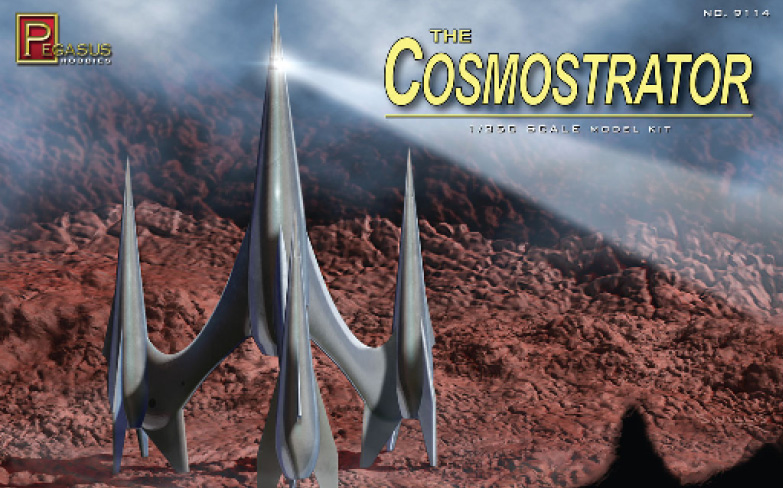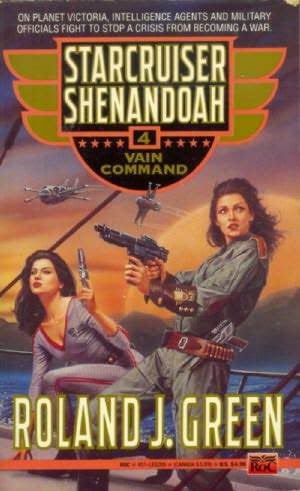Tempus fugit ...
I found myself rereading the works of Roland Green (Starship Shenandoah), Robert Frezza (A Small Colonial War), and revisiting favorites like The Mote in God's Eye. I follow Bill Keith's science fiction, always have, and I was happy to see he will be the guest of honor at Pittsburgh's Confluence 2014 science-fiction convention. Yay, Bill!
So why come back to this orbital zone? Mainly because of a kind fellow in Japan, Joseph Ficor, who's been a fan of my short stories. Joseph was kind enough to create a pdf collection of my works, complete with a cover and artwork. I need to take pen/keyboard in hand and write another Kosmosflot story to show my appreciation to him. And even though cats on the Internet have bigger followings than this little blog, I shouldn't abandon it out of disgust for the low state of science fiction these days.
And what else of science-fiction interest has come my way? Monsters in Motion sent me notice of this new, beautiful plastic model of the Cosmostrator, from First Spaceship on Venus, (German: Der Schweigende Stern - "The Silent Star"), adapted from Stanislaw Lem's story The Astronauts. I may have to volunteer my now 12-year-old son to help me assemble it. We just finished a model of the USS Arizona for his Pearl Harbor history project, so we've had some practice. Did you know that plastic model cement is now scented orange? I miss the heady fumes of the original Testors glue.
In May the new Godzilla film will premiere, and I hope it will be a good one. The new movie will be a horror film, just like the original Gojira, and not some campy hokum. The trailer looks promising. I was disheartened at first when I read an interview with the director, who said he wanted to change Godzilla's origin. Oh no, I thought, that is awful. But after seeing the preview trailer, and the revelation that the American atomic and hydrogen bomb tests in the south Pacific were not really tests, well, I am more confident that the new movie will properly honor Big G's origins.
When I was six years old, my father was serving in the US Navy, and we were living in New Jersey, not far from Lakehurst Naval Air Station, famous for the crash of the Hindenburg airship back in the 1930's. Dad told me I had to get up early Saturday morning, that there was something special on TV that I would enjoy. He helped me wake up, made me a cup of that good Navy cocoa, and for the next 90 minutes I was spellbound. The film was, of course, Godzilla, King of the Monsters, the American version of Gojira, dubbed, starring Raymond Burr. Dad knew I loved dinosaurs and had loved seeing Gorgo, the British version of Godzilla, when I was younger. It's one of my fondest memories of my father, and Godzilla became one of my favorite movie monsters. Thanks, Dad.
And I want to recommend Los Últimos Días, a very well done post-apocalyptic tale from Spain. It's refreshing that it's not a zombie story, and no ugly aliens causing the end of the world ... at least none that we see. It's the story of a man in Barcelona when the big crack-up occurs, desperately seeking his pregnant wife after the human race is paralyzed by mass agoraphobia. No one can survive going out of doors, and civilization is soon on the skids. The story kept me captivated, and the final scene is surprisingly touching, one that every parent who loves their child will understand. The film is in Spanish, and I watched it with subtitles. See it if you can.
D’os Vadanya,
VIKTOR KUPRIN







 Thelonious Chipmunk is a Talker -- an animal who has inherited the gift of language from his ancestors -- and he, for one, believes in humans. Who else could have made the old paper postcard he treasures? Who else could have built the tall building shown on the postcard? His desire to know more about the humans is fulfilled in a surprising and dangerous way when Thelonious is swept down the river into a strange new world -- a world of architectural ruins and puzzling artifacts, where gangs and warlords prowl amongst the crumbling remains of civilization. With three new companions -- a bear, a porcupine, and a small brown lizard -- Thelonious embarks on a search for the far-off Fog Mound. It is a journey that becomes nothing less than a quest to uncover the secrets of Earth's past.
Thelonious Chipmunk is a Talker -- an animal who has inherited the gift of language from his ancestors -- and he, for one, believes in humans. Who else could have made the old paper postcard he treasures? Who else could have built the tall building shown on the postcard? His desire to know more about the humans is fulfilled in a surprising and dangerous way when Thelonious is swept down the river into a strange new world -- a world of architectural ruins and puzzling artifacts, where gangs and warlords prowl amongst the crumbling remains of civilization. With three new companions -- a bear, a porcupine, and a small brown lizard -- Thelonious embarks on a search for the far-off Fog Mound. It is a journey that becomes nothing less than a quest to uncover the secrets of Earth's past. After living on the Fog Mound for quite some time, Thelonious Chipmunk and his friends are ready to continue their travels. There are some old questions to be answered and new places to be explored. So, with the addition of new friends Bill the Human and Cluid Chipmunk, the animals sail off down the river in a specially designed boat. As in The Travels of Thelonious, the intrepid chipmunk pursues his personal quest to uncover the differences between legend and history. And to answer the most troubling question of all — what happened to the humans?
After living on the Fog Mound for quite some time, Thelonious Chipmunk and his friends are ready to continue their travels. There are some old questions to be answered and new places to be explored. So, with the addition of new friends Bill the Human and Cluid Chipmunk, the animals sail off down the river in a specially designed boat. As in The Travels of Thelonious, the intrepid chipmunk pursues his personal quest to uncover the differences between legend and history. And to answer the most troubling question of all — what happened to the humans? Thelonious Chipmunk and his friends face a whole new series of adventures after they reach the mysterious Mattakeunk Institute and discover . . . a time machine! Will the time machine lead them to the answers they seek? Perhaps some of the answers will come when the animals' traveling companion, Bill the Human, regains his ability to speak. However there is one pressing need above all others -- the need to save their beloved Fog Mound from the Dragon Lady herself, and her evil ratmink assistants.
Thelonious Chipmunk and his friends face a whole new series of adventures after they reach the mysterious Mattakeunk Institute and discover . . . a time machine! Will the time machine lead them to the answers they seek? Perhaps some of the answers will come when the animals' traveling companion, Bill the Human, regains his ability to speak. However there is one pressing need above all others -- the need to save their beloved Fog Mound from the Dragon Lady herself, and her evil ratmink assistants.





